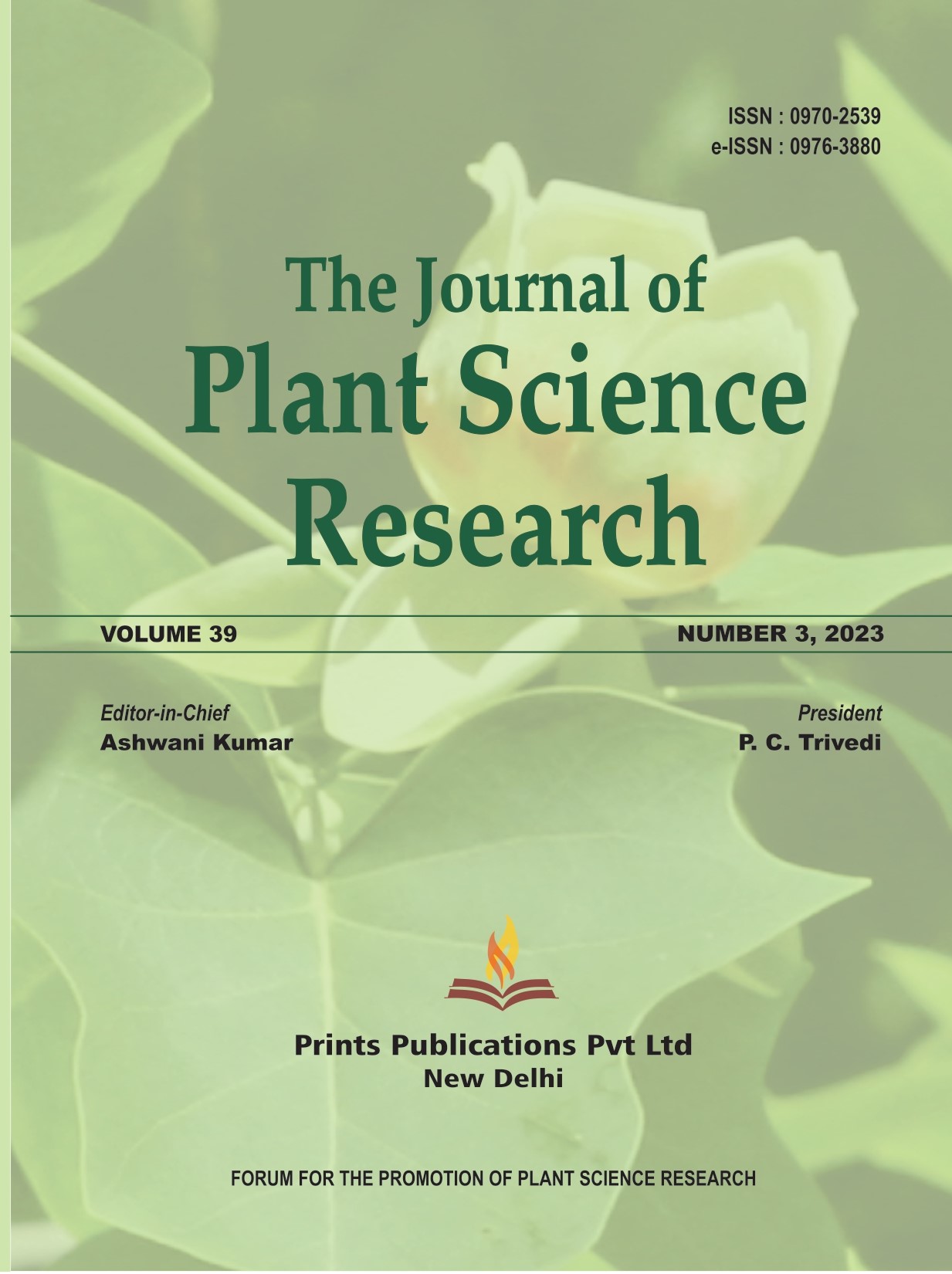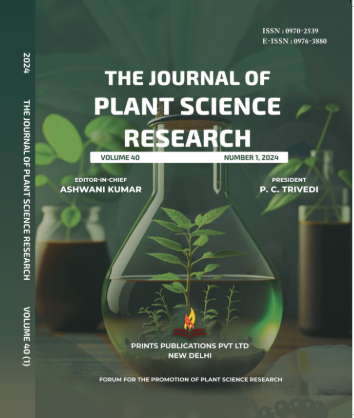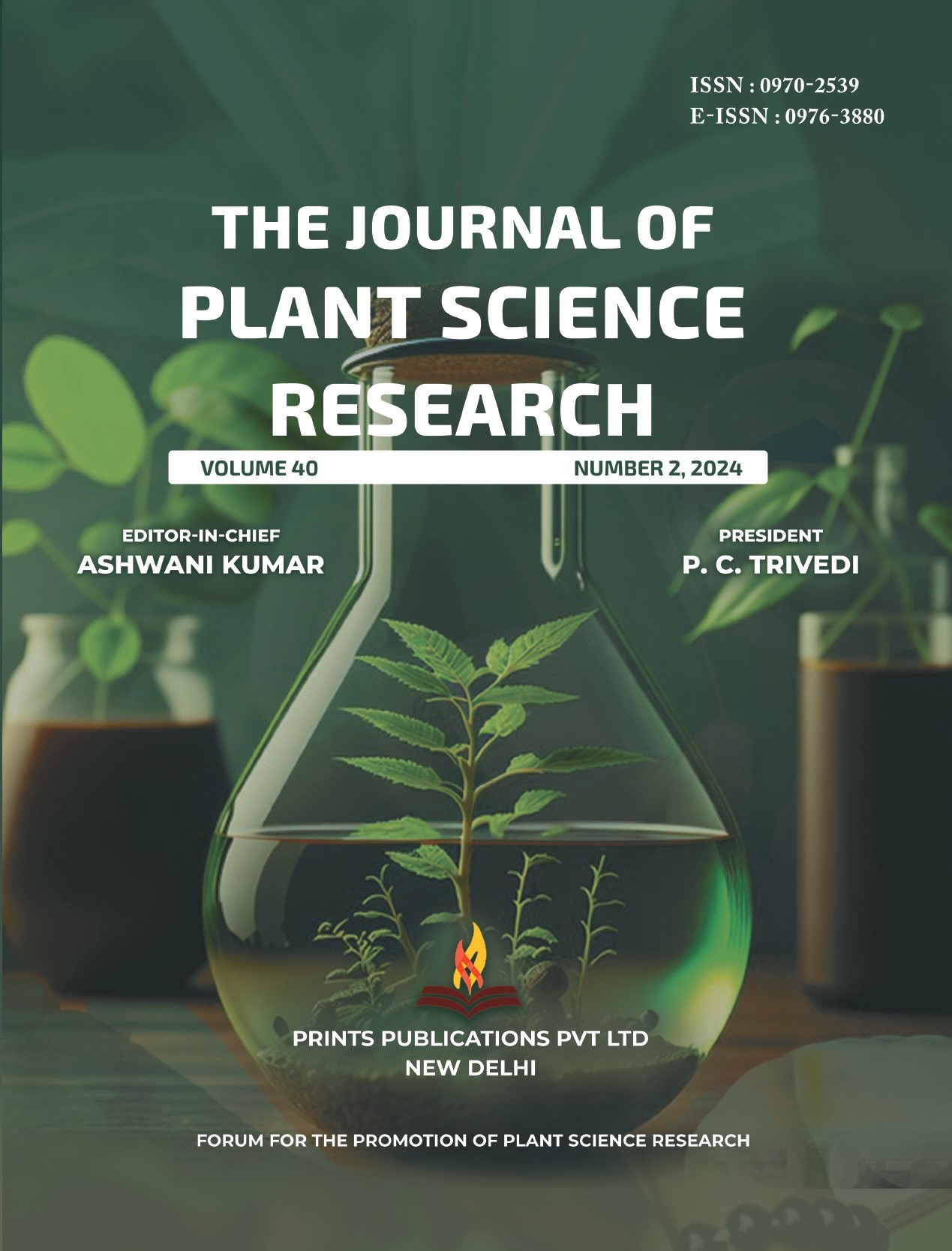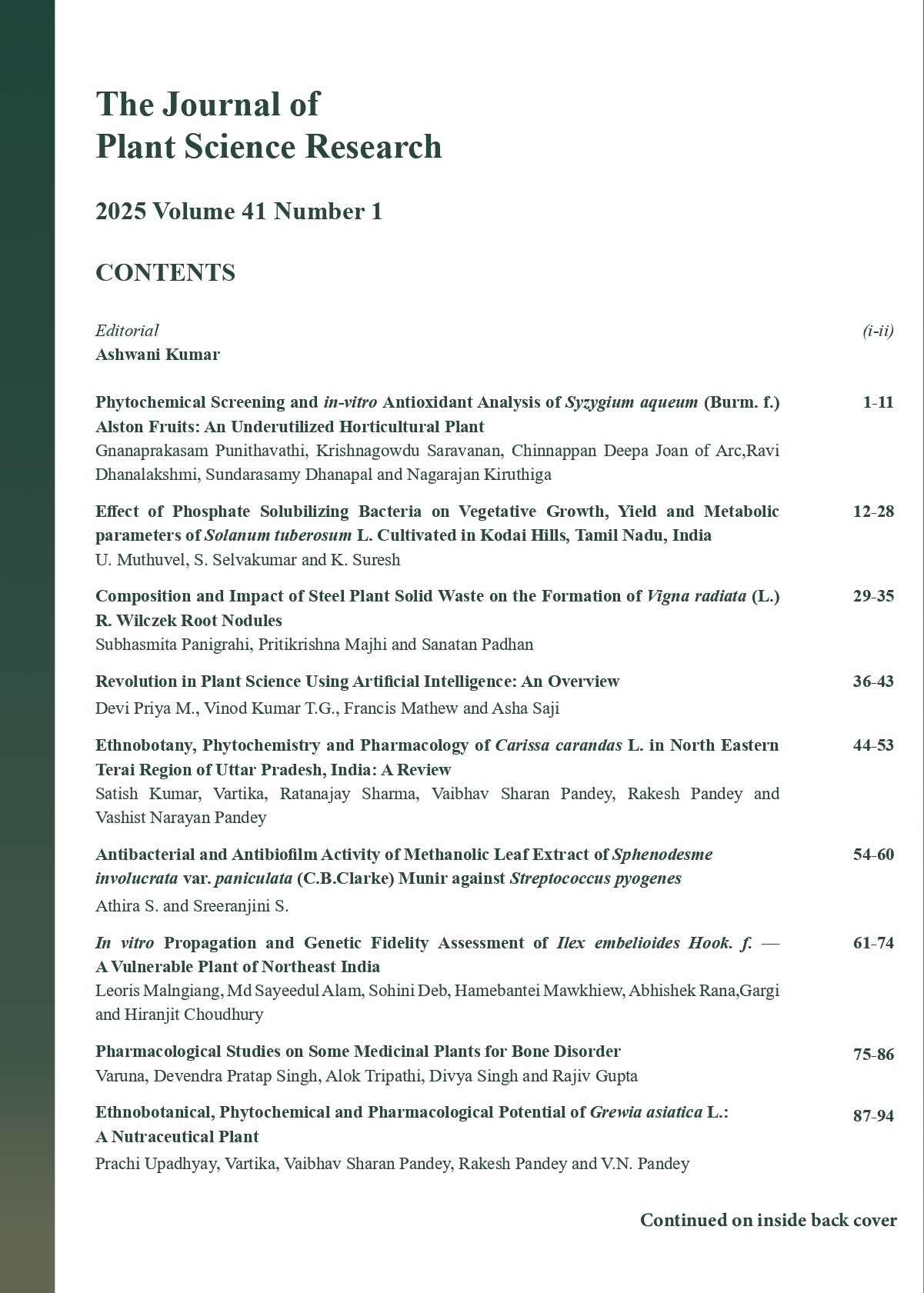The Journal of Plant Science Research - A UGC Care-Listed Journal
Published in Association with Forum For the Promotion of Plant Science Research
Current Volume: 41 (2025 )
ISSN: 0970-2539
e-ISSN: 0976-3880
Periodicity: Tri-annual
Month(s) of Publication: April, August & December
Subject: Botany
DOI: 10.32381/JPSR
Online Access is Free for Life Member
Phytochemical Screening and Antibacterial Activity of Bark Exudates in Selected Tree Species
By : K Parani, P Veera Lakshmi
Page No: 629-636
Abstract :
Plants have evolved multiple defense mechanisms against microbial pathogens and various types of environmental stress. Qualitative screening of phytochemical analysis from bark exudates of tree species (Cassia siamea, Araucaria, Artocarpus heterophyllus) were analysed. Tannins, alkaloids, steroids, saponins, reducing sugars, flavonoids, phenols, glycosides are present in aqueous and acetone extracts. But proteins and starch are present in acetone extracts of three bark samples. The maximum flavonoid content was observed in bark sample of Artocarpus heterophyllus, followed by Cassia siamea which was par with Araucaria. The highest amount of alkaloid and phenols were seen in Cassia followed by Artocarpus and Artocarpus heterophyllus. The maximum zone of inhibition were observed in aqueous and acetone extract of Cassia siamea by E. coli (20 mm) and Proteus vulgaris (18 mm). This was followed by acetone extract of Araucaria (15 mm) and Artocarpus heterophyllus (12 mm) by Proteus vulgaris. Whereas minimum zone of incubation were noted in aqueous extract of bark samples of Araucaria, Cassia (5.0 mm) and Artocarpus heterophyllus (4.0 mm) by E. coli and Bacillus subtilis. Bacterial antibiotic streptomycin which was used as positive controls were more effective compared to all the plant extracts tested against the bacterial pathogens. The aqueous extract of Cassia and Araucaria and acetone extract of Artocarpus heterophyllus showed the highest scavenging activity (Dark coloration) upon addition of FeCl3 which could be due to the high phenol content.
Authors :
K Parani : PG and Research Department of Botany, Sri Parasakthi College for Women, Courtallam (An Autonomous Institution Affiliated to Manonmanium Sundaranar University, Tirunelveli), Tamil Nadu, India.
P Veera Lakshmi : Research Scholar, PG and Research Department of Botany, Sri Parasakthi College for Women, Courtallam (An Autonomous Institution Affiliated to Manonmanium Sundaranar University, Tirunelveli), Tamil Nadu, India.
DOI: https://doi.org/10.32381/JPSR.2022.38.02.18






